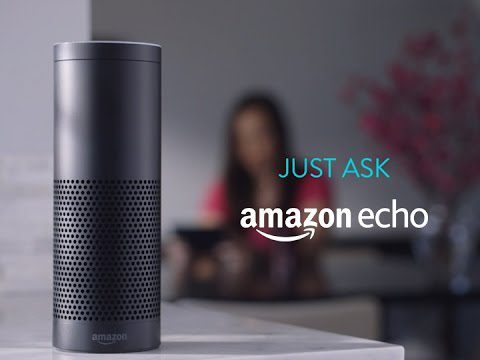
Amidst SO MUCH technological advancement, from the proliferation of sensors to form factors to new modes of interaction to software intelligence, many product companies make the grave mistake of over-complicating connected versions of their products. Too many buttons on a screen, too many levels to tap through to accomplish a task, too many features in an app, too many sensors (and not enough value) to justify a low battery life…
One might compellingly argue this temptation has thwarted the mass adoption of Smart Home technologies to date. The reality today just 10% of Americans report owning a Smart Home device. To the extent sensor-enabled and Internet connected objects and appliances, often termed the Internet of Things, has had any success whatsoever in consumer markets, it has been very vertical/single use-specific and device-focused—Fitbits for tracking fitness; Nest thermostat for adjusting temperature remotely; connected cameras controllable via mobile app.
Enter the Amazon Echo. A basic cylindrical music speaker by the looks of it, but an entirely new approach to the smart home device space. The Amazon Echo circumvents much of the interface friction of other devices and their associated mobile apps; its primary mode of interaction is through voice-commands. The device responds when you say its name, and (more interestingly), is constantly improving through its “Alexa” platform’s machine learning and natural language processing capabilities. But while the interface itself is extremely novel for most users—Apple’s Siri and Google’s Now features leave much to be desired in their abilities for reliable interactions—what Amazon has tapped is a level of horizontal utility we haven’t seen since the advent of the smartphone. Horizontal refers to the technology’s ability to serve many use cases or needs. By speaking into a cylindrical device, current integrations and possible services available transcend listening to music, they transcend Amazon, even the home itself.
Consider the following use cases already possible on the Echo today:

Entertainment applications enable media consumption for the sake of fun, learning, recreation, and so on. Information-providing apps offer users the ability to make decisions in real-time, and often set the context for apps that ‘facilitate,’ or enable action—whether that is making a purchase directly through Amazon, calling an Uber, or even customizing one’s own “if-then” rules to automate any number of devices or apps. These are core use cases for consumer-facing IoT and incorporate successful elements from other brands into a central platform.
This is a significant improvement when compared to the vast majority of so called “smart home” devices on the market today with singular, or at best, limited to very specific use cases like turning on the lights, brewing coffee, or remote video-conferencing with the dog. Aside from its breadth, the device accelerates purchasing—an obvious win for Amazon. A recent Mindmeld study found the Echo’s voice interface drove a 3x faster transaction experience purchasing the same item (“men’s black Adidas shoes for under $75) using voice assistants/microphones compared to navigating menus in mobile apps.
The Echo’s array of use cases also … echoes… the ‘horizontal’ nature of the mobile phone. Like the smartphone, the device can effectively serve as the remote control for a wide variety of needs. What consumers don’t want is another app for every new appliance or another channel required for every interaction (each with their own kinks and quirks). The other notable element (taking a page from Apple’s App store and Google Play) is Amazon’s decision to open up the application– what they call “skills’– development for the Echo to developers. In effect, anyone can add skills to Alexa, and users can activate new skills each week.
What Amazon has done by creating an effective, multifunctional in-home assistant, is render itself a magnet for other organizations trying to get into the home. Organizations of all kinds, from telecom to insurance providers, manufacturers to retailers, and more, are all vying for in-home market share—many are already integrating with the Echo. This requires exploration at every level, from design principles to business models, from privacy to interoperability. Instead of asking “What would Google do?” founder of O’Reilly Media, Tim O’Reilly, challenges companies of every type to now ask “What would Alexa do?”

